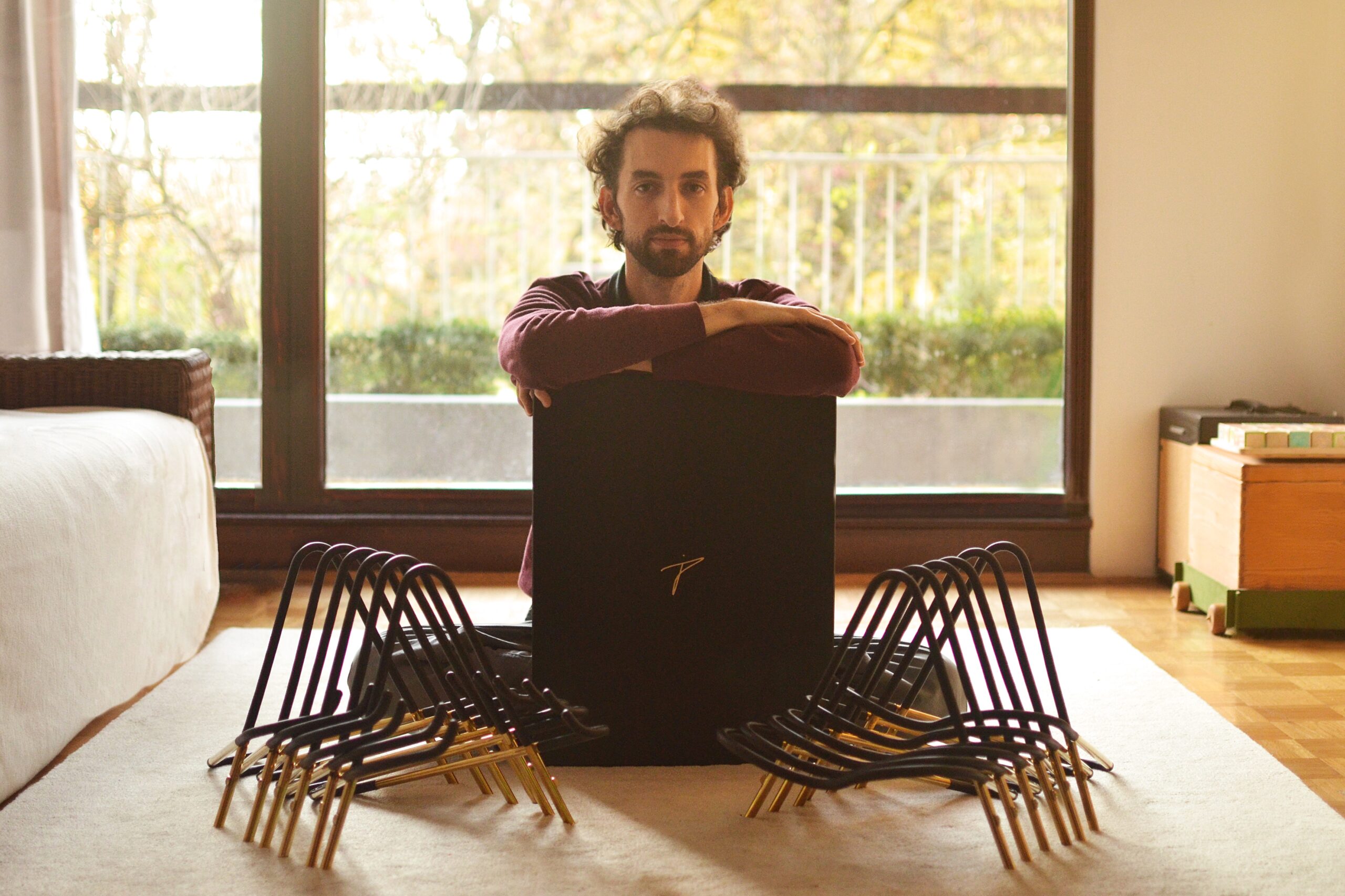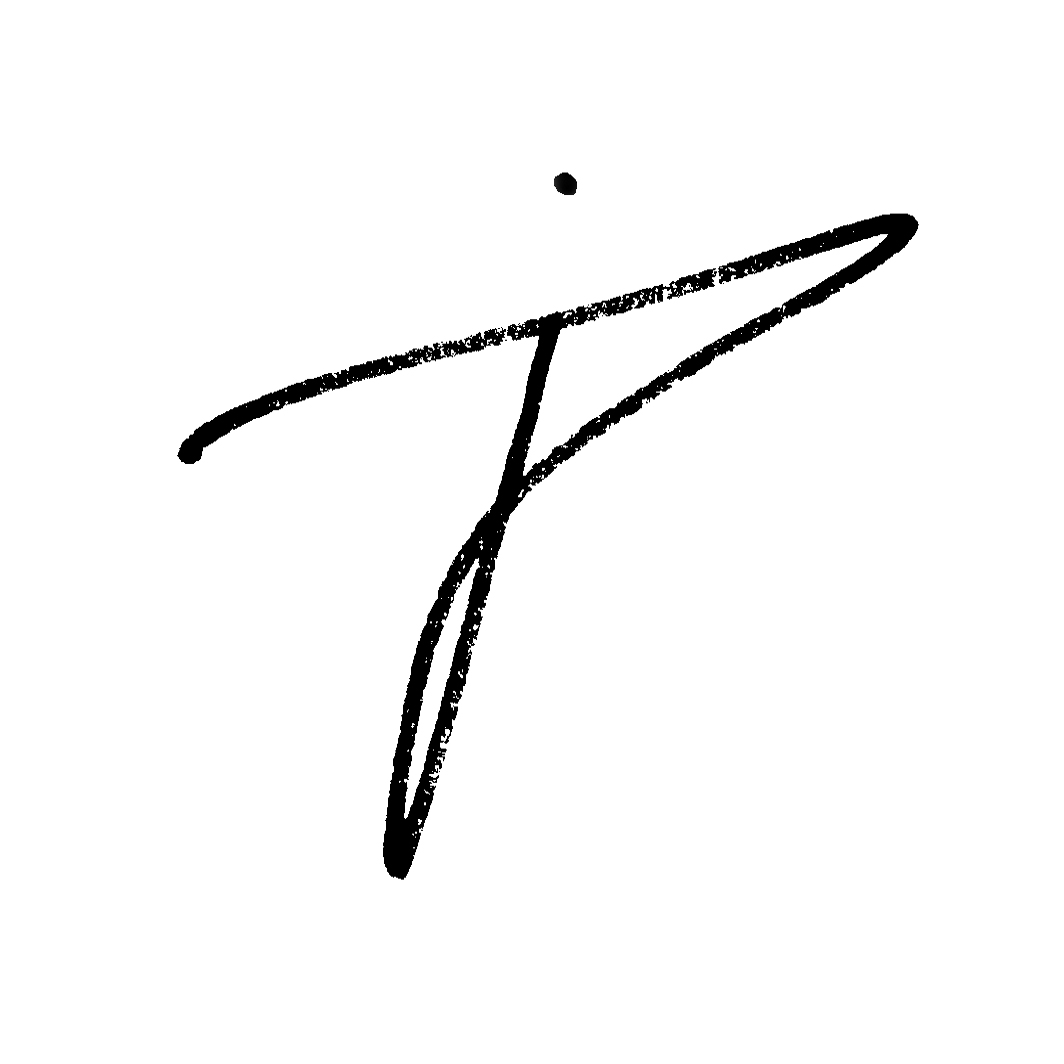Three Days for the Idea,
Five Months for a Prototype,
Seven Years for Production

I have been searching for a stand for my acoustic guitar for quite some time. Unable to find one that was both practical and beautiful, I decided to create one myself. While designing the initial model, a strong vision struck me, and a thought suddenly emerged:
“This stand will also be for other people.”
At the time, I wasn’t sure of the exact meaning behind this thought, but its profound impact stayed with me. Little did I know that the design process would embark me on a remarkable journey, connecting me with fascinating individuals from around the globe, from the great Slovenian designer Oskar Kogoj to the renowned inventor Peter Florjančič, and all the way to America, to one of the world’s largest guitar companies.
Painstakingly, I constructed the prototype entirely on my own. As I meticulously filed the brass rods, shaped the curves with pliers, and stitched the leather onto them, the process became an arduous journey of research and experimentation. My aim was to ensure that the stitches on the curves fanned out at regular intervals. Each stitch required intense concentration, as a single mistake could cause the delicate leather edge to snap. Stitch by stitch, it took me twelve hours to finish the prototype.
Once the prototype was complete, I showcased it at the Ambient Ljubljana fair, where it received the “Good Idea” award. The audience’s response was overwhelmingly positive, prompting me to take immediate action in organizing production for mass manufacturing. A fortuitous encounter with a young cellist during the exhibition proved to be pivotal, as it inspired me to design a stand specifically for cellos. It didn’t take long for me to realize that there is a substantial difference between a unique product and one that is mass-produced.
The production required not only new technical skills and inventiveness but, above all, unwavering persistence.
The craftsmen I collaborated with had to demonstrate immense patience, accommodating my constant changes and adjustments. Together, we embarked on the journey of uncovering hidden possibilities and refining the technological process to capture the beauty radiating from the original prototype.
In the beginning, most of the craftsmen gazed at me in astonishment and dismissed me one by one. The first one arrogantly remarked: “You cannot do this thing the way you imagine. People often have grand ideas, but reality is different from dreams.”The second craftsman, after a few meetings, declined, stating: “Even if you were to offer me a thousand euros for a single stand, I would not do it.” With the third one, I turned away since I recognized, upon looking at his workshop, that he lacked the necessary skills. I sought an uncompromising and comprehensive approach, a rarity among those I encountered. The primary challenge resided in milling the intricate folding system, bending the complex steel rods, and meticulously sewing the leather. To ensure functionality and maintain the desired quality of the stand, every component needed to be executed with utmost precision and harmonization. After countless detours and bitter farewells, fate finally led me to an old master who comprehended the true essence of quality. He was the first craftsman who intuitively understood beauty, as he wisely reminded me during our initial interaction: “No, we will not follow this path, for the product would lose its inherent beauty.”
The concept of beauty eludes many technologists, as art remains unpredictable, and numerous craftsmen find it challenging to reconcile artistic exploration with the technological process.
Finally, when I encountered a seamstress capable of undertaking the task, I presented her with my prototype. She marveled at my meticulousness and proceeded to demonstrate a simplified sewing technique. I rejected the seamstress’s initial stitched iteration several times until I was completely satisfied with the final result. After each unsuccessful attempt, I diligently explored new sewing methods at home to preserve the leather’s impeccable and seamless appearance. Special techniques were necessary to prevent wrinkles from forming along the arches of the stand. Eventually, we managed to reduce the sewing process from twelve hours to three. After two arduous years of constant refinement, the seamstress looked me in the eye and confessed: “I had never met such a persistent young man.” I responded: “Nor had I ever met such a persistent seamstress.”
Before I realized it, my journey expanded beyond prototyping and production, delving into the realm of marketing. While I possessed extensive knowledge about the world of design, I was inexperienced in marketing. However, I was determined to learn from the masters in the field. Through some fortunate stroke of luck, I managed to obtain the phone number of Peter Florjančič, the great Slovenian inventor. Among his notable achievements were patents for the perfume atomiser, plastic zipper, and the now-forgotten photographic slide frame. It was widely known that Peter not only secured patents but also successfully mass-produced his inventions. Remarkably, he was still alive when I reached out to him. He was 99. Despite struggling with poor vision and difficulty speaking, our brief conversation led me to his crucial insight about marketing: one must first perfect the product and then let it speak for itself in silence when presented to potential investors. In essence, the object itself should convey its quality.
It was in that moment that I grasped the significance of allowing the object to evoke a visceral response before engaging in logical contemplation.
The renowned designer Oskar Kogoj also played a significant role in encouraging me to embrace the essence of materials. I had the privilege of meeting him a few years earlier during my post-master’s trip to Italy when I coincidentally stumbled upon his gallery in Miren. Our encounter sparked a profound and captivating conversation, leading to a lasting connection where we exchanged valuable phone conversations and letters. During one of our interactions, he stated: “Talent is of utmost importance! Without talent, nothing goes. I cannot send you to the Olympic Games if you cannot jump!” Thus, I shared various stages of my design process with him, and our discussions and critiques became a wellspring of inspiration and motivation for me to pursue improvements. I distinctly recall his critique of my original logo, in which he emphasized the need for geometric precision and measurability. In response, I discarded the previous logo and used my signature on the stand’s packaging instead.
Upon completing all stages of production, I began sending out offer letters to produce and sell my stands, facing numerous rejections from around the world. However, by an interesting coincidence, I made contact with a company that recognized the potential in my Harmony stand. This path led me to America, where I received an invitation from Martin Guitar, one of the world’s largest guitar companies. For nearly two centuries, Martin has gained renown for their meticulous craftsmanship, producing acoustic guitars played by legendary musicians like Eric Clapton, Johnny Cash, and John Mayer. The quality and uniqueness of my stand impressed Martin, urging them to encourage me to produce and sell it under my own brand. This pivotal moment marked the beginning of selling stands from my atelier Juran. Consequently, Harmony stands for guitars and cellos have traveled to many countries worldwide, from Germany, England, and France to the United States and Australia. The epic odyssey from inception to sales has finally reached its completion.
It took me three days to develop the idea, five months to make a prototype, and seven years to establish production.
The extensive endeavor had also a hidden purpose, as the quality of the Harmony stand caught the attention of the international jury consisting of 43 members in one of the world’s most prestigious design competitions, often referred to as the “Oscars of design.” Hence, the Harmony cello stand was honored with the esteemed Red Dot Award: Product Design 2023. The initial thought I had seven years ago, which resonated, “This stand will also be for other people,” now acquired a deeper significance. The essence of the Harmony stand lies not merely in its practical functionality but also in its intangible qualities.
Good design offers functionality, while great design sparks inspiration. Its hidden purpose is to evoke a sense of beauty and harmony within a human being. In today’s world, there is an abundance of thinking but a scarcity of feeling. There is a plethora of things but a lack of beauty. However, true beauty does not reside in external appearances; it comes from within. From the human being itself. When we perceive beauty in the external world, we can also sense it within ourselves. The material world can, therefore, act as a tool through which one can access the dimension of awareness.
In this way, beautiful objects and spaces show us the way back to our true nature.

